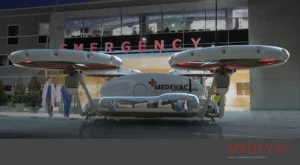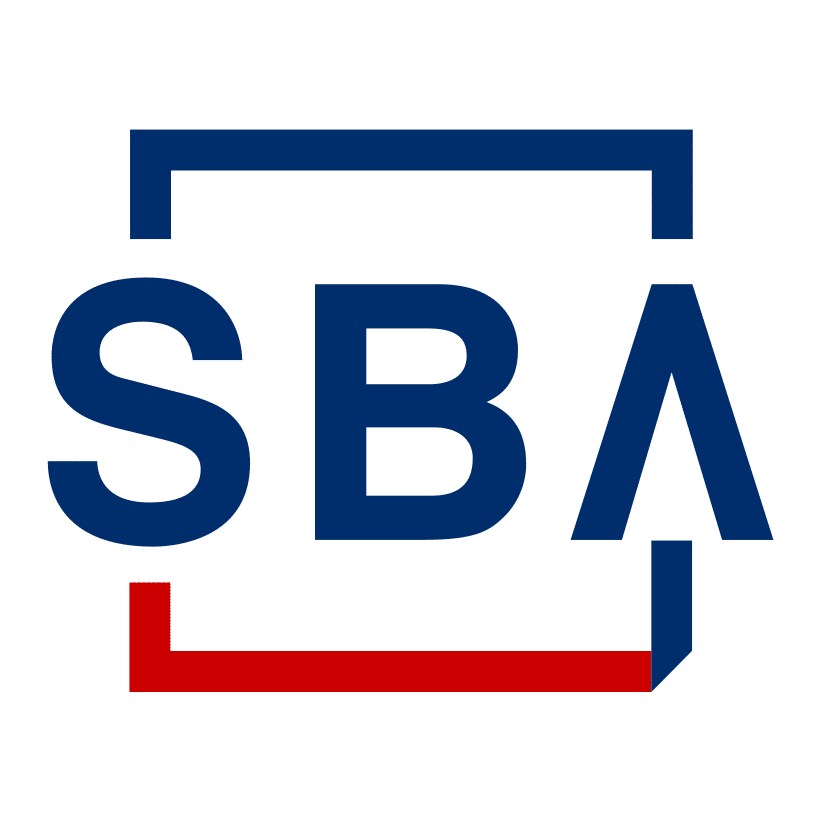What is Design Thinking?
Design Thinking is a human-centered, problem-solving methodology that emphasizes collaboration and iteration to create user-focused solutions. In this section, we will delve deeper into the human-centered approach, problem-solving methodology, collaborative and iterative process, history and development, and core principles of Design Thinking.

Human-Centered Approach
Putting users at the heart of the design process
Design Thinking places the users’ needs and experiences at the center of the problem-solving process. This user-centric approach ensures that solutions are tailored to the specific requirements, desires, and preferences of the target audience.
Understanding user context
To effectively apply a human-centered approach, engineers must consider the context in which users will interact with the final product or solution. This includes understanding the physical, social, and cultural environments that may influence user behavior and preferences.
Benefits of a human-centered approach
Focusing on user needs can lead to more effective and user-friendly solutions, ultimately resulting in higher customer satisfaction and increased market success.
Problem-Solving Methodology
Structured approach
Design Thinking provides a structured approach to identifying, understanding, and addressing problems. This methodical process helps engineers break down complex problems into manageable components, allowing for more effective problem-solving and decision-making.
Adaptable methodology
Design Thinking is an adaptable methodology that can be customized to suit the unique needs and constraints of different projects and industries. This flexibility enables engineers to apply the process effectively in a wide range of contexts and scenarios.
Collaborative and Iterative Process
Design Thinking encourages collaboration among team members, fostering a culture of open communication, knowledge-sharing, and collective problem-solving. This collaborative approach can lead to a broader range of ideas and more innovative solutions.
Cross-functional teams
Working with diverse, cross-functional teams allows engineers to draw upon the expertise and perspectives of professionals from various disciplines, including design, marketing, and business. This interdisciplinary approach can help engineers better understand the complexities of the problem at hand and develop more comprehensive solutions.
Iterative testing and feedback
Design Thinking emphasizes the importance of refining solutions through iterative testing and feedback. This process allows engineers to identify and address potential issues early on, reducing the risk of project failure and improving the overall quality of the final solution.
Phases of Design Thinking
Similar to Human Centric Design, The Design Thinking process has 5 steps. Read more about Human Centric Design
- Empathize: Understand user needs through interviews, observations, and other research methods.
- Define: Articulate the problem statement based on the insights gathered during the empathize stage.
- Ideate: Generate a wide range of potential solutions through brainstorming and other creative techniques.
- Prototype: Build and test physical or digital representations of the proposed solutions to evaluate their effectiveness.
- Test: Validate and refine the solutions based on user feedback and additional testing.
| Aspect | Design Thinking | Human-Centered Design |
|---|---|---|
| Definition | A problem-solving approach that focuses on empathy, creativity, and iteration to develop user-centered solutions. | A design methodology that considers the end-users’ perspectives and experiences to create solutions that meet their needs. |
| Goal | Develop innovative, user-focused solutions by understanding user needs and utilizing creative problem-solving techniques. | Create products and services that provide value and a positive experience for the end-users by considering their needs and desires. |
| Process | Empathize, Define, Ideate, Prototype, Test | Observe, Ideate, Prototype, Implement |
| User Involvement | Users are involved through empathy, interviews, observations, and testing. | Users actively participate in the design process through interviews, co-creation workshops, and usability testing. |
| Emphasis | Creativity, innovation, and experimentation in problem-solving. | Empathy and understanding of the users’ needs, emotions, and experiences. |
| Collaboration | Encourages collaboration among multidisciplinary teams. | Fosters collaboration with end-users and other stakeholders throughout the design process. |
| Iterative Approach | Emphasizes iterative development and continuous improvement. | Focuses on iterative development with user feedback and evaluation. |
| Outcome | User-centered solutions that address needs and expectations, fostering innovation and creativity. | User-focused products and services that provide value, positive experiences, and meet user need |
Core Principles
Design Thinking is built on five core principles that guide the problem-solving process:
Empathy
Understanding the needs, desires, and experiences of users is crucial for creating effective solutions. Through interviews, observations, and other research methods, engineers can gain valuable insights into user behavior and preferences, enabling them to develop solutions that truly address user needs.
Experimentation
Encouraging creative exploration and risk-taking is essential for generating innovative ideas and solutions. By embracing experimentation, engineers can push the boundaries of traditional problem-solving approaches and discover new, more effective ways to address user needs.
Collaboration
Working with diverse, cross-functional teams fosters knowledge-sharing and generates a broader range of ideas. Through collaboration, engineers can leverage the expertise and perspectives of colleagues from various disciplines, leading to more comprehensive and innovative solutions.
Iteration
Continuously refining and improving solutions based on user feedback and testing is a critical aspect of Design Thinking. By embracing an iterative process, engineers can identify and address potential issues early on, enhancing the overall quality and effectiveness of the final solution.
Focused on User Needs
Ensuring that the final solution addresses the identified user needs and delivers value is at the core of Design Thinking. By prioritizing user needs throughout the problem-solving process, engineers can develop solutions that not only meet functional requirements but also provide a meaningful and satisfying user experience.
History and Development
Origins in Industrial Design
Design Thinking originated in the field of industrial design in the 1950s and 1960s, where designers focused on creating functional, aesthetically pleasing, and user-friendly products. Early pioneers in this field, such as John E. Arnold and Herbert A. Simon, laid the groundwork for the Design Thinking process by emphasizing the importance of understanding user needs, problem-solving, and iterative design.
Evolution in Various Fields
Over time, Design Thinking has evolved and been adopted by professionals in diverse fields, including business, education, and healthcare. The versatility and adaptability of the methodology have made it a valuable tool for addressing complex, real-world problems and driving innovation across a wide range of industries.
Adoption by Engineers
Engineers have recognized the value of Design Thinking in addressing complex, real-world problems and have integrated it into their practices to drive innovation and improve user experiences. By incorporating Design Thinking principles, engineers can develop more user-focused and innovative solutions, enhancing the overall success of their projects.

Advantages of Design Thinking for Engineers
Enhanced Problem-Solving Skills
Design Thinking helps engineers prioritize the needs and desires of the users, enabling them to develop solutions that better address the requirements and expectations of those users. By empathizing with the target audience, engineers can gain a deeper understanding of the problem and uncover insights that can lead to innovative solutions (Brown, 2008)1.
Encourages Creativity and Innovation
The Design Thinking process stimulates creative thinking, enabling engineers to explore unconventional ideas and develop innovative solutions. By challenging assumptions and embracing ambiguity, engineers can identify unique approaches to problem-solving and create novel products or services (Kolko, 2015)2.
Improved Collaboration
Design Thinking promotes communication and knowledge-sharing among team members, creating an environment conducive to collaboration (Liedtka & Ogilvie, 2011)3. By fostering open dialogue and encouraging diverse perspectives, engineers can work together more effectively to develop innovative solutions.
Cross-Functional Teams
Engineers can work closely with professionals from other disciplines to gain a comprehensive understanding of the problem and generate a wide range of potential solutions. This cross-functional collaboration enables the team to identify synergies and leverage the unique skills and knowledge of each team member (Edmondson & Nembhard, 2009)4.
Effective Communication of Ideas
The collaborative nature of Design Thinking helps engineers communicate their ideas effectively, fostering a shared understanding of the project goals and potential solutions. By using visual representations, storytelling, and iterative feedback, engineers can clarify their concepts and receive valuable input from their teammates (Schrage, 1999)5.
Reduced Risk of Failure
Through user feedback and testing, engineers can identify and address potential problems before they escalate. By involving users in the development process, engineers can discover unanticipated issues, make necessary adjustments, and avoid costly mistakes (Thomke, 2003)6.
References
- Brown, T. (2008). Design Thinking. Harvard Business Review. https://hbr.org/2008/06/design-thinking ↩
- Kolko, J. (2015). Design Thinking Comes of Age. Harvard Business Review. https://hbr.org/2015/09/design-thinking-comes-of-age ↩
- Liedtka, J., & Ogilvie, T. (2011). Designing for Growth: A Design Thinking Tool Kit for Managers. Columbia University Press. https://www.jstor.org/stable/10.7312/lied15264 ↩
- Edmondson, A. C., & Nembhard, I. M. (2009). Product Development and Learning in Project Teams: The Challenges Are the Benefits. Journal of Product Innovation Management, 26(2), 123-138. https://doi.org/10.1111/j.1540-5885.2009.00341.x ↩
- Schrage, M. (1999). Serious Play: How the World’s Best Companies Simulate to Innovate. Harvard Business School Press. https://www.amazon.com/Serious-Play-Companies-Simulate-Innovate/dp/0875848141 ↩
- Thomke, S. (2003). Experimentation Matters: Unlocking the Potential of New Technologies for Innovation. Harvard Business School Press.
When Not to Use Design Thinking
Design Thinking is a potent method for tackling intricate, vague problems needing innovative answers. Yet, it is not always fitting for every situation. In this part, we examine when Design Thinking may be unnecessary or ineffective, such as routine problems, available established solutions, unneeded innovation or creativity, and resource, time, or organizational limits. One must weigh the problem’s specifics, available resources, and organizational dynamics before choosing Design Thinking or a more traditional problem-solving approach. By understanding Design Thinking’s limitations and constraints, organizations can make wiser decisions about its use and when to rely on other strategies.
Routine, Well-Defined Problems
Design Thinking may not be necessary when addressing routine problems with well-defined solutions. These problems often have established methods for solving them, and applying Design Thinking may only add complexity without generating additional benefits (Dorst, 2011).
Existing Solutions Available
If there are established solutions that effectively address the problem, there may be no need for the innovation or creativity that Design Thinking fosters. In these cases, using existing solutions can save time and resources, while still achieving the desired outcome (Liedtka & Ogilvie, 2011).
No Need for Innovation or Creativity
In cases where the problem can be solved through conventional methods, Design Thinking may not offer significant benefits. Traditional problem-solving approaches may be more efficient and cost-effective for situations that do not require innovative or creative solutions (Brown, 2009).
Resource and Time Constraints
Design Thinking may not be suitable for projects with limited resources, strict deadlines, or budget constraints. The iterative process of Design Thinking can be resource-intensive, making it difficult to implement when budgets are tight (Stickdorn et al., 2018).
Limited Budget
The iterative process of Design Thinking can be resource-intensive, as it often involves multiple iterations, prototyping, and testing. This can make it difficult to implement when budgets are tight, and resources must be allocated carefully (Stickdorn et al., 2018).
Strict Deadlines
The time required for multiple iterations and prototyping may not be feasible when working under tight deadlines. In these situations, it may be more efficient to use established problem-solving methods that can deliver results more quickly (Kolko, 2015).
Organizational Resistance
Design Thinking may not be effective in organizations that are resistant to change or lack support from key stakeholders. Implementing Design Thinking requires a flexible, iterative approach that may challenge existing processes and organizational structures (Dunne & Martin, 2006).
Lack of Support from Stakeholders
If stakeholders are unwilling to support the Design Thinking process, it may be challenging to implement and yield meaningful results. Stakeholder buy-in is crucial for the success of Design Thinking initiatives, as it helps facilitate collaboration, resource allocation, and the integration of new solutions (Kupp & Anderson, 2017).
Unwillingness to Change Existing Processes
Organizations that are resistant to change may struggle to adopt the flexible, iterative approach required for Design Thinking. This resistance can result from a variety of factors, such as a fear of failure, an attachment to established processes, or a lack of understanding of the benefits of Design Thinking (Buchanan, 1992).
Reference
- Dorst, K. (2011). The core of ‘design thinking’ and its application. Design Studies, 32(6), 521-532.
- Liedtka, J., & Ogilvie, T. (2011). Designing for growth: A design thinking tool kit for managers. Columbia University Press. https://cup.columbia.edu/book/designing-for-growth/9780231158381
- Brown, T. (2009). Change by Design: How Design Thinking Transforms Organizations and Inspires Innovation. Harper Business. https://www.harpercollins.com/products/change-by-design-tim-brown
- Stickdorn, M., Hormess, M. E., Lawrence, A., & Schneider, J. (2018). This is service design doing: Applying service design thinking in the real world. O’Reilly Media.
- Kolko, J. (2015). Design thinking comes of age. Harvard Business Review, 93(9), 66-71. https://hbr.org/2015/09/design-thinking-comes-of-age
- Kupp, M., & Anderson, J. (2017). The innovation matrix: A tool for navigating the space of innovation. California Management Review, 59(2), 77-97.
- Buchanan, R. (1992). Wicked problems in design thinking. Design Issues, 8(2), 5-21.
How to Implement Design Thinking in Engineering Projects
Building a Design Thinking culture requires a commitment to open-mindedness, creativity, collaboration, and continuous learning. By promoting these values, organizations can create an environment that supports Design Thinking principles and fosters innovation and growth.
Building a Design Thinking culture
Design thinking is a problem-solving approach that involves empathizing with the end-user, defining the problem, ideating solutions, prototyping and testing to get feedback. It is a process that can be applied to any field or industry and can help teams solve complex problems in a creative and efficient way. However, implementing Design Thinking in engineering projects requires a culture that supports its principles.
Encourage Open-Mindedness and Creativity
To foster a culture that supports Design Thinking principles, organizations must encourage open-mindedness and creativity among their employees. This can be achieved by creating an environment that promotes creative thinking, risk-taking, and a willingness to explore unconventional ideas. This can be done by removing barriers to creativity, such as hierarchical structures and a fear of failure. Leaders should encourage their teams to challenge assumptions, ask questions, and explore new ideas.
Promote Collaboration and Teamwork
Collaboration and teamwork are essential components of Design Thinking. Organizations that promote interdisciplinary collaboration can benefit from the diverse perspectives and knowledge of team members. Engineers should work closely with colleagues from other disciplines, such as marketing, design, and business, to foster knowledge-sharing and generate a broader range of ideas. Cross-functional teams should be encouraged to work together to solve problems, using Design Thinking as a common language.
Foster Continuous Learning and Improvement
Design Thinking is a methodology that requires ongoing learning and professional development to enhance engineers’ skills in the process. Organizations should support their employees’ ongoing learning and professional development by providing access to training, workshops, and resources that enhance their skills in Design Thinking and related methodologies. Engineers should be encouraged to experiment and try new approaches, and leaders should provide a safe space for their teams to fail and learn from their mistakes.
Design Thinking: Tools and Techniques
Design Thinking is a powerful approach to problem-solving that emphasizes empathy, creativity, and collaboration. By using the tools and techniques discussed in this section, designers can gain insights into users’ needs, generate innovative solutions, test and refine their prototypes, and communicate their ideas effectively.
User Interviews and Observations
One of the fundamental principles of Design Thinking is empathy for users. Conducting interviews and observing users in their natural environments can provide valuable insights into their needs, behaviors, and experiences. By understanding users’ pain points, challenges, and desires, designers can create solutions that meet their needs and improve their experiences.
Brainstorming and Ideation Sessions
Brainstorming and ideation sessions are collaborative activities that involve generating a wide range of potential solutions. These sessions can be organized in groups, where individuals can share their ideas and build upon each other’s suggestions. By encouraging creative thinking and diverse perspectives, designers can explore multiple possibilities and identify innovative solutions.
Prototyping and Testing Methods
Prototyping is a process of creating a preliminary version of a solution to test and refine its effectiveness. Designers can use various prototyping techniques, such as sketching, 3D printing, or digital mock-ups, to visualize and evaluate their proposed solutions. By testing their prototypes with users, designers can gather feedback and identify areas for improvement.
Visualization Tools
Visualization tools can help designers communicate their ideas effectively and facilitate collaboration with stakeholders. Mind maps, flowcharts, and storyboards are examples of visualization tools that can help designers organize their thoughts and convey complex information in a clear and concise manner. By using these tools, designers can share their ideas, receive feedback, and refine their solutions.
Integrating Design Thinking with engineering methodologies
Integrating Design Thinking with engineering methodologies enhances product development. By prioritizing the user, engineers create solutions that surpass performance requirements and are easy to use.
Agile and Lean Engineering
Agile and Lean engineering are iterative development methodologies that prioritize flexibility, speed, and continuous improvement. Combining Design Thinking with Agile and Lean principles can foster a user-centered, iterative approach to product development. Design Thinking helps Agile and Lean teams to gain a deep understanding of user needs and develop solutions that meet those needs.
Systems Engineering
Systems Engineering is a methodology that focuses on designing and managing complex, interrelated systems. Incorporating Design Thinking into Systems Engineering ensures that these systems are designed with user needs in mind. By putting the user at the center of the design process, Systems Engineers can develop systems that are not only functional and efficient but also easy to use and intuitive.
Quality Management
Quality Management methodologies, such as Six Sigma or Total Quality Management, aim to ensure that products or services meet established quality standards and performance requirements. Applying Design Thinking alongside Quality Management methodologies can ensure that user-focused solutions meet these standards. By using Design Thinking to understand user needs, Quality Management teams can develop solutions that not only meet performance requirements but also exceed user expectations.






